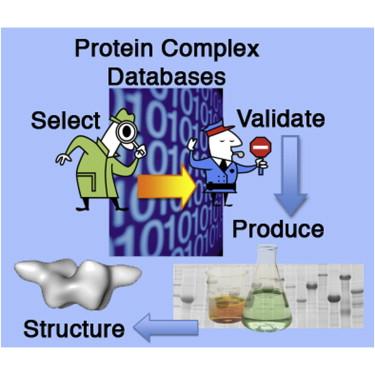Systematic bioinformatics and experimental validation of yeast complexes reduces the rate of attrition during structural investigations

Brooks MA, Gewartowski K, Mitsiki E, Létoquart J, Pache RA, Billier Y, Bertero M, Corréa M, Czarnocki-Cieciura M, Dadlez M, Henriot V, Lazar N, Delbos L, Lebert D, Piwowarski J, Rochaix P, Böttcher B, Serrano L, Séraphin B, van Tilbeurgh H, Aloy P, Perrakis A, Dziembowski A, For high-throughput structural studies of protein complexes of composition inferred from proteomics data, it is crucial that candidate complexes are selected accurately. Herein, we exemplify a procedure that combines a bioinformatics tool for complex selection with in vivo validation, to deliver structural results in a medium-throughout manner. We have selected a set of 20 yeast complexes, which were predicted to be feasible by either an automated bioinformatics algorithm, by manual inspection of primary data, or by literature searches. These complexes were validated with two straightforward and efficient biochemical assays, and heterologous expression technologies of complex components were then used to produce the complexes to assess their feasibility experimentally. Approximately one-half of the selected complexes were useful for structural studies, and we detail one particular success story. Our results underscore the importance of accurate target selection and validation in avoiding transient, unstable, or simply nonexistent complexes from the outset.
Structure,
2010, 9(8), 1075-1082
Pubmed: 20826334
Direct link: 10.1016/j.str.2010.08.001
Link to the supplementary material
